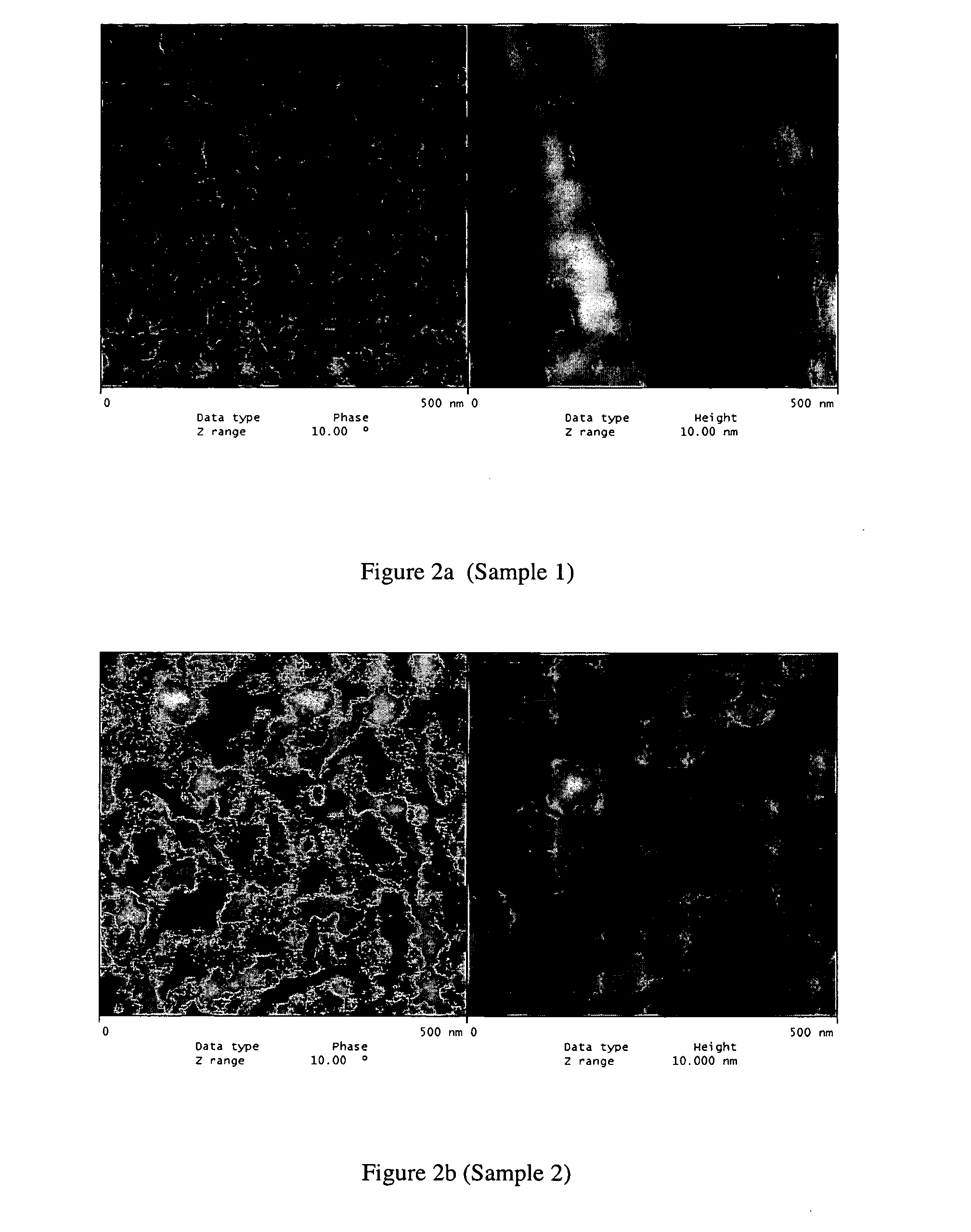Chemical mechanical polishing pad
a technology of mechanical polishing and polishing pads, applied in the field of polishing pads, can solve the problems of increasing the cost of cmp consumables, and increasing the cost of manufacturing tools,
- Summary
- Abstract
- Description
- Claims
- Application Information
AI Technical Summary
Problems solved by technology
Method used
Image
Examples
example 1
[0034]The polymeric pad materials were prepared by mixing various amounts of isocyanates as urethane prepolymers with 4,4′-methylene-bis-o-chloroaniline [MBCA] at 50° C. for the prepolymer and 116° C. for MBCA. In particular, various toluene diiosocyanate [TDI] with polytetramethylene ether glycol [PTMEG] prepolymers provided polishing pads with different properties. The urethane / polyfunctional amine mixture was mixed with the hollow polymeric microspheres (EXPANCEL® 551DE20d60 or 551DE40d42 manufactured by AkzoNobel) either before or after mixing the prepolymer with the chain extender. The microspheres had a weight average diameter of 15 to 50 μm, with a range of 5 to 200 μm, and were blended at approximately 3,600 rpm using a high shear mixer to evenly distribute the microspheres in the mixture. The final mixture was transferred to a mold and permitted to gel for about 15 minutes.
[0035]The mold was then placed in a curing oven and cured with a cycle as follows: thirty minutes ramp...
example 2
[0041]FIGS. 2A to 2D illustrate four samples of polyurethane imaged using SPM techniques. These techniques were modified to amplify the differences in different regions of the samples based on their hardness, allowing the hard and soft phases to be imaged. To carry out the experiment an FESP tip with a low spring constant was used to give additional sensitivity. All sampling parameters were kept constant during the experiment for all samples analyzed. A setpoint ratio of 0.8 was chosen to collect the images. The two images for each sample show the sample phase distribution on the left and the corresponding topography for that same region on the right.
[0042]FIGS. 2A and 2B (Samples 1 and 2) correspond to polyurethanes having distinct two phase structure of hard phase and soft phase, with ratio of purest hard phase to purest soft phasec (Sample B) lacks a distinct two-phase structure. FIG. 2d (Sample H) lacks sufficient purest soft phase relative to the amount of purest hard phase nec...
example 3
[0050]Pads of 80 mil (2.0 mm) thickness and 22.5 inch (57 cm) diameter were cut from cakes prepared with the process of Example 1. The pads included a circular groove pattern of 20 mil (0.51 mm) width, 30 mil (0.76 mm) depth and 70 mil (1.8 mm) pitch with an SP2150 polyurethane subpad. Polishing with a SpeedFam-IPEC 472 tool on platen 1 at 5 psi (34.5 KPa), 75 rpm platen speed and 50 rpm carrier speed provided comparative polishing data for the different pads. The polishing also relied upon a Kinik CG181060 diamond conditioner. The test wafers include TEOS sheet wafers, silicon nitride sheet wafers and 1 HDP MIT pattern wafer for measuring planarization of Celexis™ CX2000A ceria-containing slurry from Rohm and Haas Electronic Materials CMP Technologies.
TABLE 6Pore Level,Pore LevelAdded vol.,FormulationPoreg / 100 gcc / 100 gDensity,Shore DDesignationStoichiometrySizeformulationformulationg / ccHardness*B-185small3.21540.69750.4B-385small1.07180.95261.8B-385medium0.75180.96760.3B-185medium...
PUM
| Property | Measurement | Unit |
|---|---|---|
| Pore size | aaaaa | aaaaa |
| Percent by mass | aaaaa | aaaaa |
| Pressure | aaaaa | aaaaa |
Abstract
Description
Claims
Application Information
 Login to View More
Login to View More - R&D
- Intellectual Property
- Life Sciences
- Materials
- Tech Scout
- Unparalleled Data Quality
- Higher Quality Content
- 60% Fewer Hallucinations
Browse by: Latest US Patents, China's latest patents, Technical Efficacy Thesaurus, Application Domain, Technology Topic, Popular Technical Reports.
© 2025 PatSnap. All rights reserved.Legal|Privacy policy|Modern Slavery Act Transparency Statement|Sitemap|About US| Contact US: help@patsnap.com



